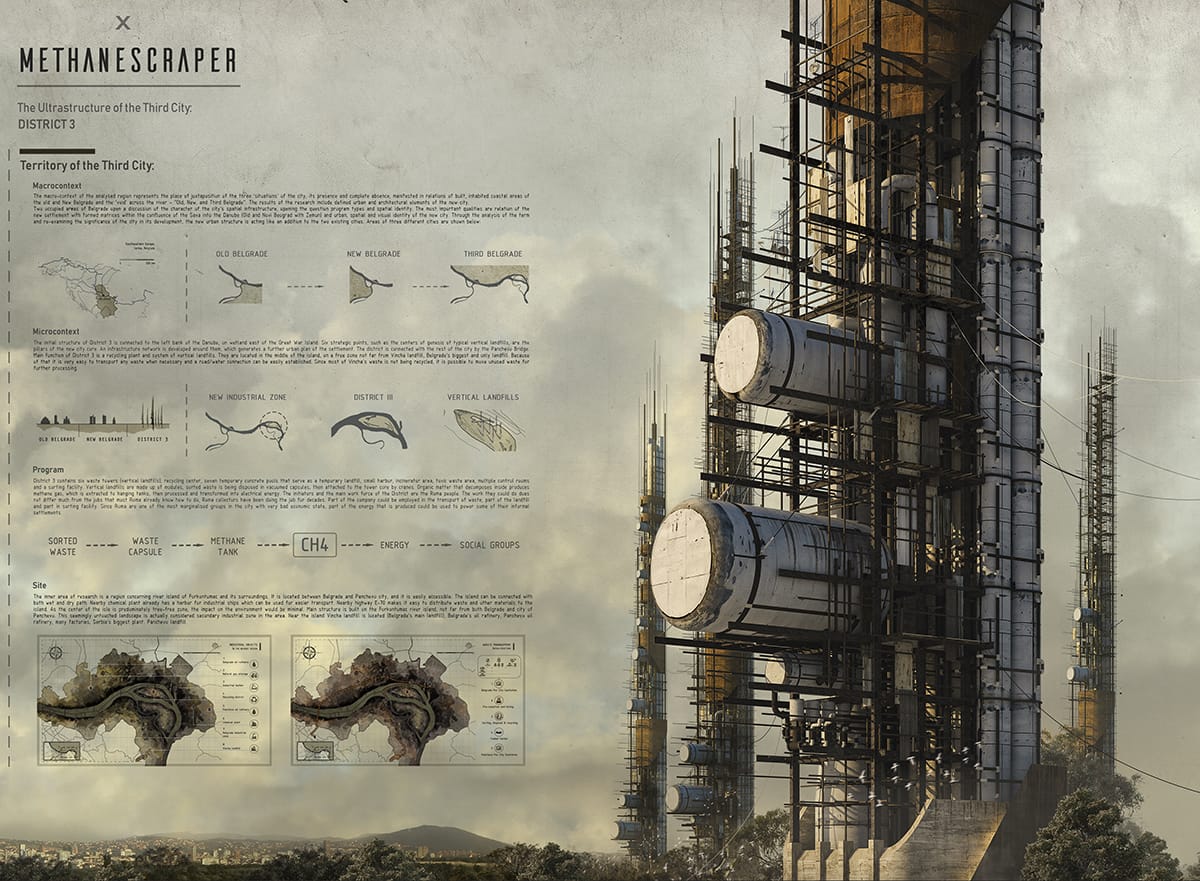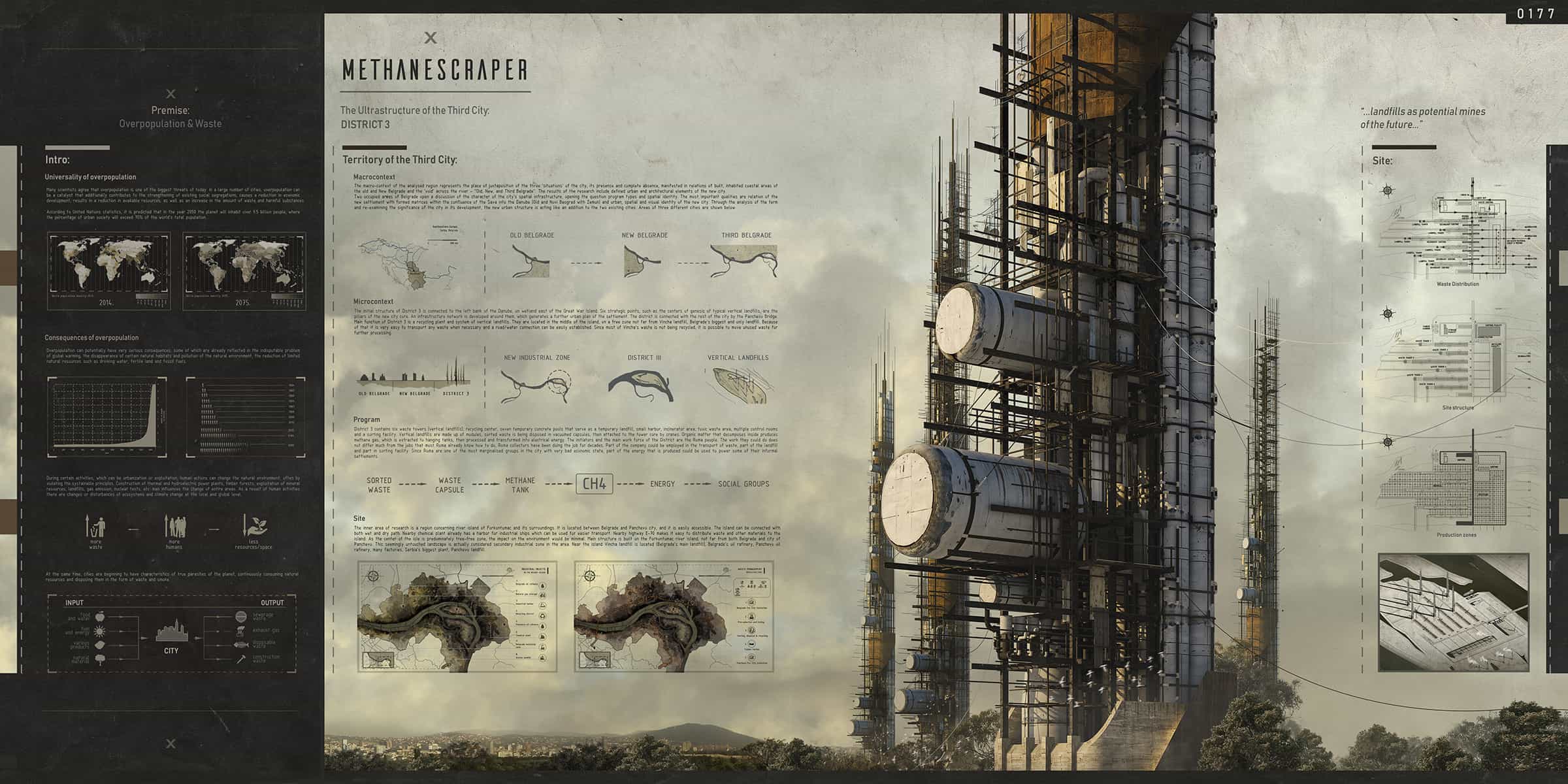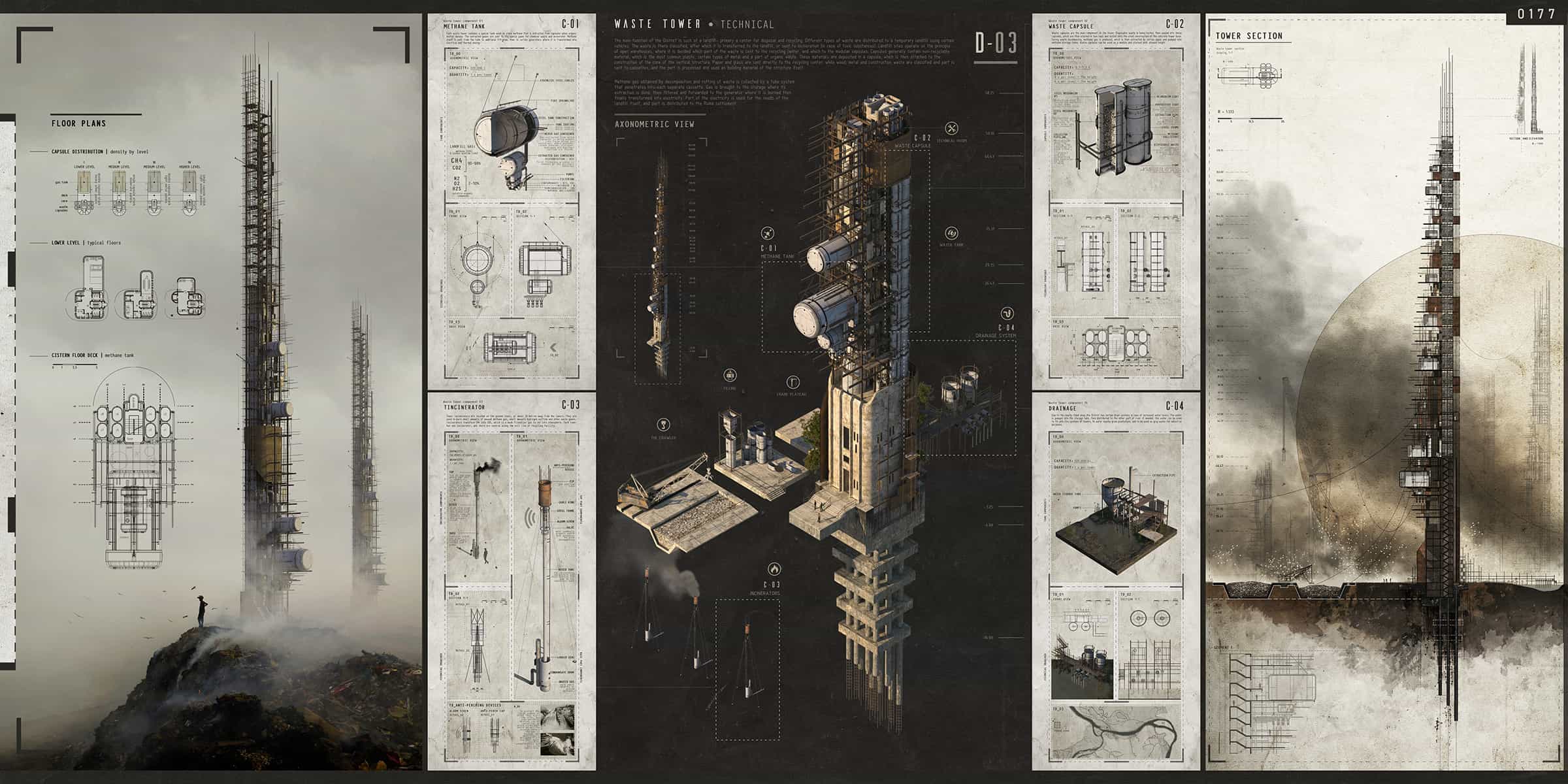First Place
2019 Skyscraper Competition
Marko Dragicevic
Serbia

Abstract
Basing its foundations on the outlines of the Belgrade city, the new infrastructure generated on the left bank of the Danube river aims to establish a balance in hypothetical context of environmental and social imbalances by forming a new socio-industrial element in the form of a new city district. This new urban structure, District 3, can be defined as an anticipated context of overpopulation and mass urbanization, where the complex of vertical landfill systems serves as a response to the ever-growing amounts of disposable waste, shortage of natural resources and usable space, transforming informal Belgrade structures into the mechanism of material, economic and societal recycling.
Statement
For the first time in human history, we can say that more than half of the world’s population lives in cities and urban areas, caused by the process of urbanization and the rise in global population growth. This continuous increase has had a great impact on urban habitats, natural environments, technological development and industrial expansion, and analyzing these changes, we can think about what kind of cities we can expect to develop in the future and what their characteristics are.
What makes the future city different from the present one? What kind of new components would be needed for a city decades from now? Many are studying this subject, especially sociologists, architects and engineers, almost always unanimously concluding that free space is becoming more valuable, our impact on the environment is getting more severe and the available resources are getting smaller. Therefore, we can say that human civilization is currently in a specific position, and that cities, as the epicenters of civilization, play a very important role in preserving it.
As the city population grows, so does our need for more resources. It has been proven that a person living in the city can produce up to four times more waste than a person living in the countryside. This city waste is usually taken to the nearest landfill and buried there. However, by doing this we are not only polluting the ground, air and underground waters (which can be very dangerous to health), we are potentially wasting a great amount of usable matter. Apart from recyclable material that would otherwise be simply buried, methane gas, which can be collected during organic waste decomposition, can be extremely valuable because it can be turned into electrical energy.
Giving the example of the Belgrade city, this project changes the model of a typical landfill into a raw vertical infrastructure. The towers are module-based, and every tower is consisted of waste capsules that are attached to the concrete core. Firstly, city waste is being delivered to sorting facility, where it is categorized by type (glass, plastic, organic matter, paper, wood, metal), after which it is sent to temporary landfill. The recyclable waste is taken to recycling facility, and organic matter, parts of wood and paper materials are gathered and disposed into modular waste capsules. These capsules are attached to the tower core by cranes. Every capsule is equipped with inhaler and pipeline that connects to the methane tank, and when organic matter rots, methane produced by the process is drawn from each capsule and later transformed into energy. When the matter in a capsule decomposes completely, the capsule can be taken out, cleaned and refilled. This type of landfill not only greatly reduces the negative impact on the air and ground (since it emits zero toxic gases and prevents any contact of waste with air and ground), it also massively reduces the amount of space needed to store waste.


This work is licensed under a Creative Commons License permitting non-commercial sharing with attribution. https://creativecommons.org/licenses/by-nc-nd/4.0/



